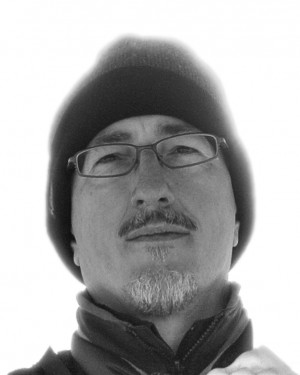Royce is quite active in the teaching side of photography, holding printing workshops and authoring many articles. Before meeting him in person I already had heard of him through his many articles and through the IRIS Photographic Society of Alberta; a non-profit photographic society he co-founded. I’m very glad to know him and consider him a good friend. I enjoy bouncing ideas off of Royce, especially when it comes to printing; Royce is a wealth knowledge and experience. You can see his amazing Coal Mine series at the PULSE exhibition. He’ll be in attendance at the opening reception this Friday, February 5th, 2016 at Inglewood Fine Arts.
 Bio
BioRoyce Howland is a fine art photographer specializing in cultural landscapes, particularly of the Canadian and American West. He defines cultural landscape as the intersection between human civilization and the land. Exploring this intersection, he finds both conflict and harmony. He seeks to present visual stories and intriguing details of the people and places he encounters, reflecting on how we have inhabited the land, the nature of our communities now, and the shared future we hope to build.
Royce is an accredited member of the Professional Photographers of Canada and a full juried member of the Albin print and online publications and he has been interviewed on conversation topics for the print and television media.erta Society of Artists. He is co-founder of the non-profit group IRIS society of Alberta, which uses photography and storytelling in the pursuit of community building, both locally and abroad.
Royce is also a writer, editor, workshop leader and instructor on photography and creativity topics. His writing has appeared in print and online publications and he has been interviewed on photography and conversation topics for the print and television media. (Source: Royce Howland)
For the PULSE exhibition, Royce has chosen several of his photographs from the abandoned Brazeau Collieries coal mine in Nordegg, Alberta. Founded by Martin Nordegg and operating between 1911 and 1955, at its peak the Brazeau Collieries mine was known for its innovation in mining operations and was one of the largest producers of coal briquettes in Canada. The town itself was an intriguing model of community planning and development, a home to work seekers (many of them immigrants) that was in many ways ahead of its time.
“My photographs hold no solutions to the apparent conflicts between the increasing need for conservation and the continuing appeal of resource extraction. Indeed, I seek to embody these gaps in my work. For example, by contrasting decaying heavy equipment and abandoned buildings with aesthetically pleasing forms and glowing light. Or by printing my images of non-renewable resource operations on a soft, warm-toned paper made from rapidly renewable bamboo.
My explorations of the industrial component of cultural landscape, and the visual portrayals that I create, are part of my own personal journey in reconciling the conflicts for myself. If my visuals resonate with viewers, I can only hope this may contribute in some small way to a sense of driven curiosity that further opens a door. Through that door may be resolution to the on-going divide between our modern industrialized world and the natural world from which we have become seemingly isolated, but upon which we utterly depend as surely as we depend upon economics, industry and technology.” (Source: Royce Howland)
Royce Howland can be found on the following social media sites:
Website: Vivid Aspect Photography
Facebook: Vivid Aspect Photography
Leave a Reply